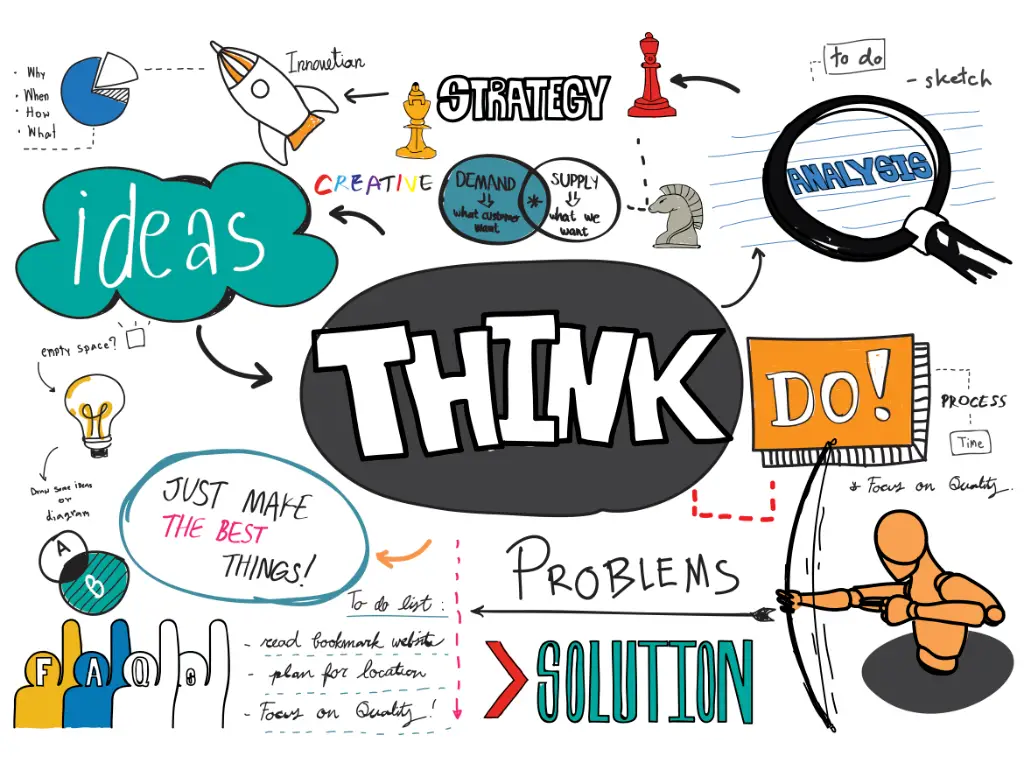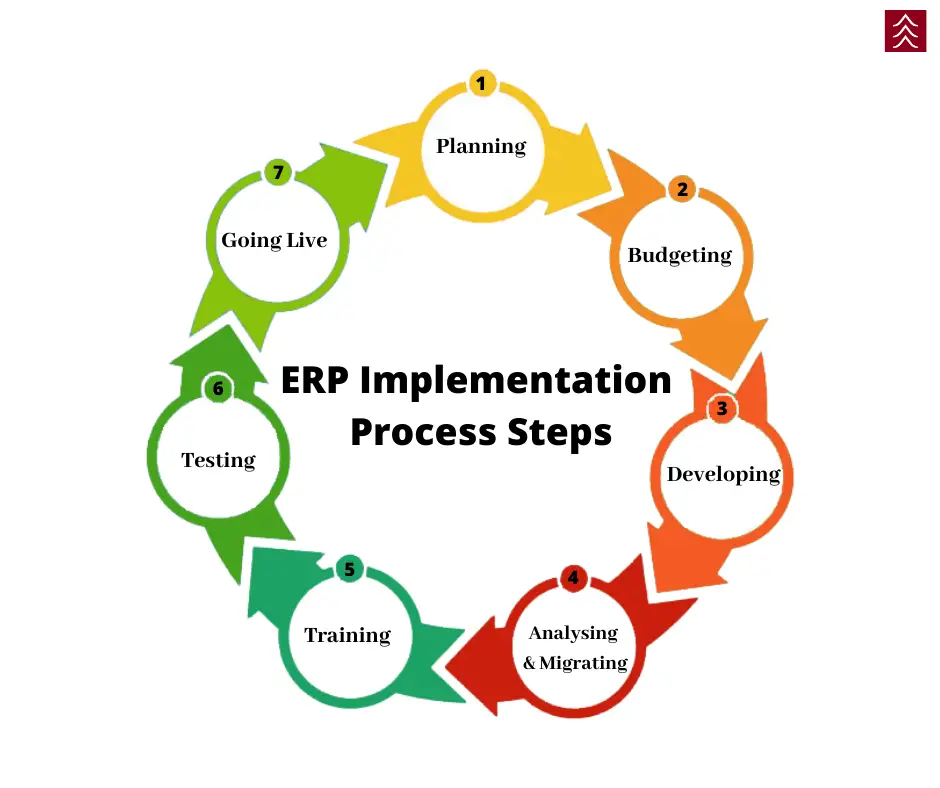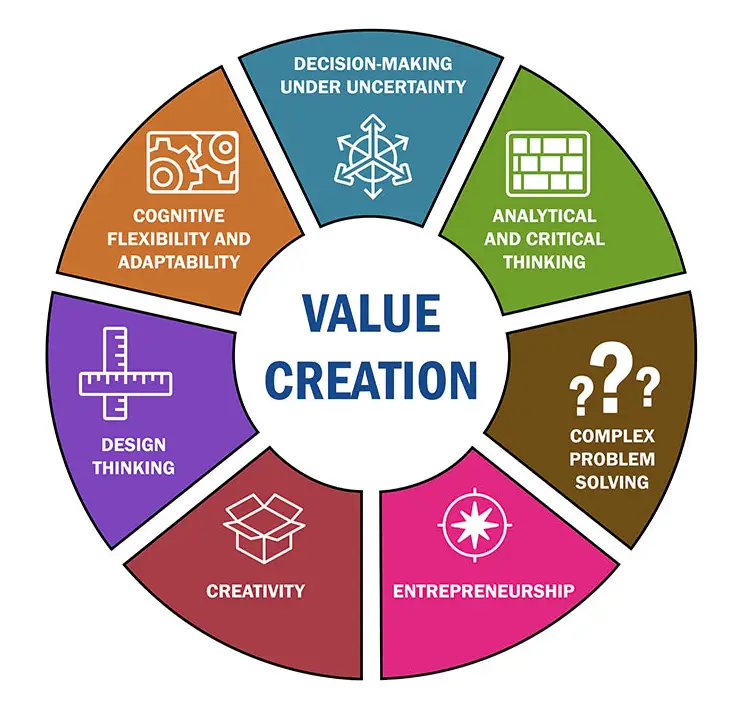Innovation is essential to the success of any business. It enables companies to stay competitive in rapidly changing markets, develop products and services that meet customer needs, and remain profitable over the long term. Innovation also positively impacts society by creating jobs, economic growth, and new technologies that improve lives. Innovation is about adapting or developing new ideas that bring value to customers and businesses.

Companies must continuously invest in research and development to develop fresh ideas and solutions for their customers. This involves embracing risk-taking and recognizing failure as part of the learning process. Organizations must stay ahead of their competitors to succeed in today’s economy by continuously innovating new products, processes, services, or business models that create real customer value.
What are the four Components of Innovation?
The four components of innovation are Collaboration, Ideation, Implementation, and Value Creation. These critical elements of invention represent the key stages of the innovation process that organizations must go through to successfully introduce new products, services, or processes to the market.
The word innovation involves profound aspects of a regarded concept. It is essential for formulating any process, business, idea, or technology. In this era of digitalization and constant technological revolution, innovation is the driving force to generate growth and development. By teaching the concept of innovation, competition increases, new windows of opportunities are evident, and the chances of future growth increase.
What is productivity?
Productivity is the combination of collaboration, economy, and efficiency. In simple words, it means how much you can get done, the state of creating, particularly at a high quality and quick speed.
An innovative culture allows individuals to work under constructive platforms and produce commendable results. It refers to the practical implementation of concepts and ideas to foster the growth of goods, facilities, and services. It is considered synonymous with evolution and transformation.
The presence of innovation undoubtedly re-styles ideas and breaks the tradition by shifting the emphasis of conventionality. Novelty and the indication of modernization are necessary for achieving long-term goals. In a nutshell, innovation is a meticulous process through which an aspect and entity are thoroughly renewed and reformed by applying new perspectives, new and unconventional methods, and launching new techniques that were hardly evident before. Successful results and efficient ideas are only achieved if new values and re-organization within the traditional concepts exist.
The typical four-step innovation process
- Idea
- Concept
- Solution
- Market
The typical four-step innovation process begins with presenting an idea as findings derived from primary research. After the concept, the next phase is the four-step innovation process ends with the market,
Innovation is not an overnight process. It involves experiments and challenges existing norms and stereotypical ideas that stagnate society or an organization. Revolution within a culture, community, and organization is only experienced if innovation is applied grassroots. Collaboration, creativity, implementation, and value creation are the four pillars of innovation.
As we said, the four critical elements of innovation are collaboration, creativity, implementation, and value creation. Similarly, the four phases of innovation are idea, concept, solution, and market.
Collaboration as an Element of Innovation
With the advent of a globalized world, the distances among communities have been minimized, making the world a single community. However, success and positive output can only be acquired if these communities work with the essence of teamwork and collaboration in the digital world. Existing challenges and predicaments are multifaceted; therefore, it is essential to work with each other.

The presence of the digital world requires different communities to put their minds together and bring diverse ideas to an organization. Collaboration may appear simple on paper, but in practical realms, various congregations and individuals’ differences of opinions and clashes need to be addressed before concluding. Co-existence is the first step for collaboration, and peaceful thinking at analytical results can only be achieved if tensions are indicated and stereotypical views are negated.
Collaboration is essential because it brings together individuals with diverse skill sets and perspectives to generate new ideas and solve complex problems. Organizations can access a broader range of expertise by collaborating, leading to more creative and innovative solutions.
What are considered the critical features of collaboration?
- Motivation.
- Communication.
- Problem-Solving
- Diversity
- Sharing.
- Support.
Different motions, perspectives, ideas, and approaches are combined as a collaborative strategy. Organizational collaboration can result in community development. Other person, group, or organization practices can redefine existing challenges and norms. Community development can be approached through interdisciplinary networks with the help of various professionals and groups that can challenge the existing structure and create new intersections. The practical goals of collaboration in an organization result in building infrastructure and providing affordable housing, educational standards, and technological developments to rural areas. Collaboration within the community involves putting minds together and finding solutions for complex problems. Economies and social scenarios can revolutionize by inculcating unconventional collaborative strategies.
Ideation as an Element of Innovation
Challenging society’s existing ideas, norms, and approaches helps redefine the organization. If new ideas are put on the table, then economic development and social prosperity can become quite evident for the years to come. Ideas and approaches that make the organization should be introduced. Ideas and novel approaches act as a blueprint for organizational reforms. Without helpful and successful strategies, the collaboration would be fruitless.

Ideas appear to be the backbone of corporate restructuring, essential to survive and flourish. Being stagnant and operating on traditional ideas can result in utter failure. The market is constantly digitalizing and booming technology, allowing entrepreneurs and organizations to request a complete makeover. Grass root participation and the employment of learning and listening tactics to the customers, along with flexibility, will allow senior organizations to flourish and innovate.
Ideation is crucial because it involves the generation of new and innovative ideas. The ideation process allows organizations to explore possibilities, test assumptions, and identify solutions. It is an essential stage in the innovation process because, without new ideas, there can be no innovation.
Implementation as an Element of Innovation
Without the practicality and implementation of ideas, new thoughts are meaningless. Organizations must create an environment fostering positivity, allowing entrepreneurs and organizers to put forth their ideas and keep them moving. If a picture has potential, it is time for the organization to look for productive ways of implementation. Execution can be initiated at a small scale with a prototype, and accurate feedback can enhance the ranking. Performance needs to be aligned with customer satisfaction and employee needs. It has to be Iterative and responsive.

Implementation is crucial because it involves turning ideas into reality. It consists of developing a plan, allocating resources, and executing the plan to bring the innovation to market. Implementation is often the most challenging stage of the innovation process because it requires coordination, discipline, and the ability to execute a vision.
What is an innovation implementation plan?
The innovation implementation plan represents the critical steps to implementing your solutions. Usually, the goal of this process is to gain targeted organization members’ appropriate and committed use of an innovation.
What are the elements of development?
The four development elements are human resources, natural resources, capital formation, and technology. Development is a process that creates growth, progress, positive change, or the addition of physical, economic, environmental, social, and demographic components.
Value Creation as an Element of Innovation
Ideas and new thoughts are useless if they do not prove their worth. These ideas must be of excellent value for organizations to reinforce and implement positively. Companies and organizations should focus on delivering compelling products that their customers buy.

The entire purpose of innovation revolves around producing value-based results. Value is an incremental addition to the products or services that the consumers positively review. Businesses need to redefine their strategy and teach and introduce the value of the products and services to ensure survival and growth within the business community. With the help of value-based items and products, businesses would compete in the ever-changing market. It is imperative to test new ideas, implement them, and assess their value without jeopardizing the reputation of the established company.
Value creation is important because it creates value for the organization, its stakeholders, and its customers. Innovation must create value to be successful. Value can be made through increased efficiency, reduced costs, enhanced customer experience, or the development of entirely new products or services.
In conclusion, innovations can only be materialized if commitment is observed within an organization. Diversity is equally essential as it allows the ideas of experts and employees to be set. Innovation is only achieved if diversity is promoted and encouraged. Arbitrary creation and random implementation of ideas would not deliver the required results. However, organizations that work on the repetitive and constant culture of diversity promotion, idea generation, and performance can innovate within an allotted time. Innovation requires resources, capital, labor, and rigorous practice to be highlighted.
Businesses need to improve and then evaluate themselves if they want to be considered successful. Innovation is all about redefining management, overseeing human resource transformation practices, and initiating new marketing and financing ventures.





